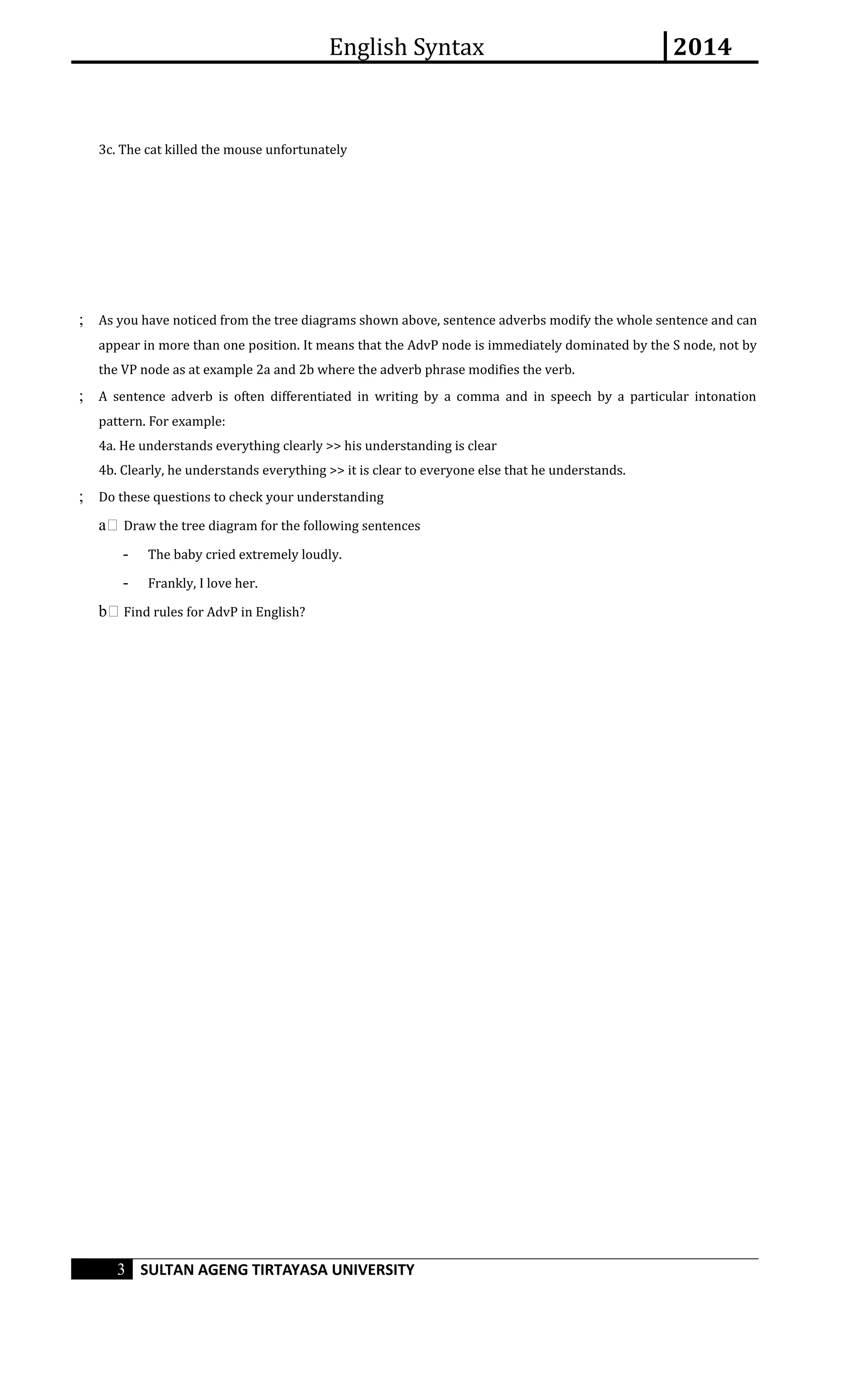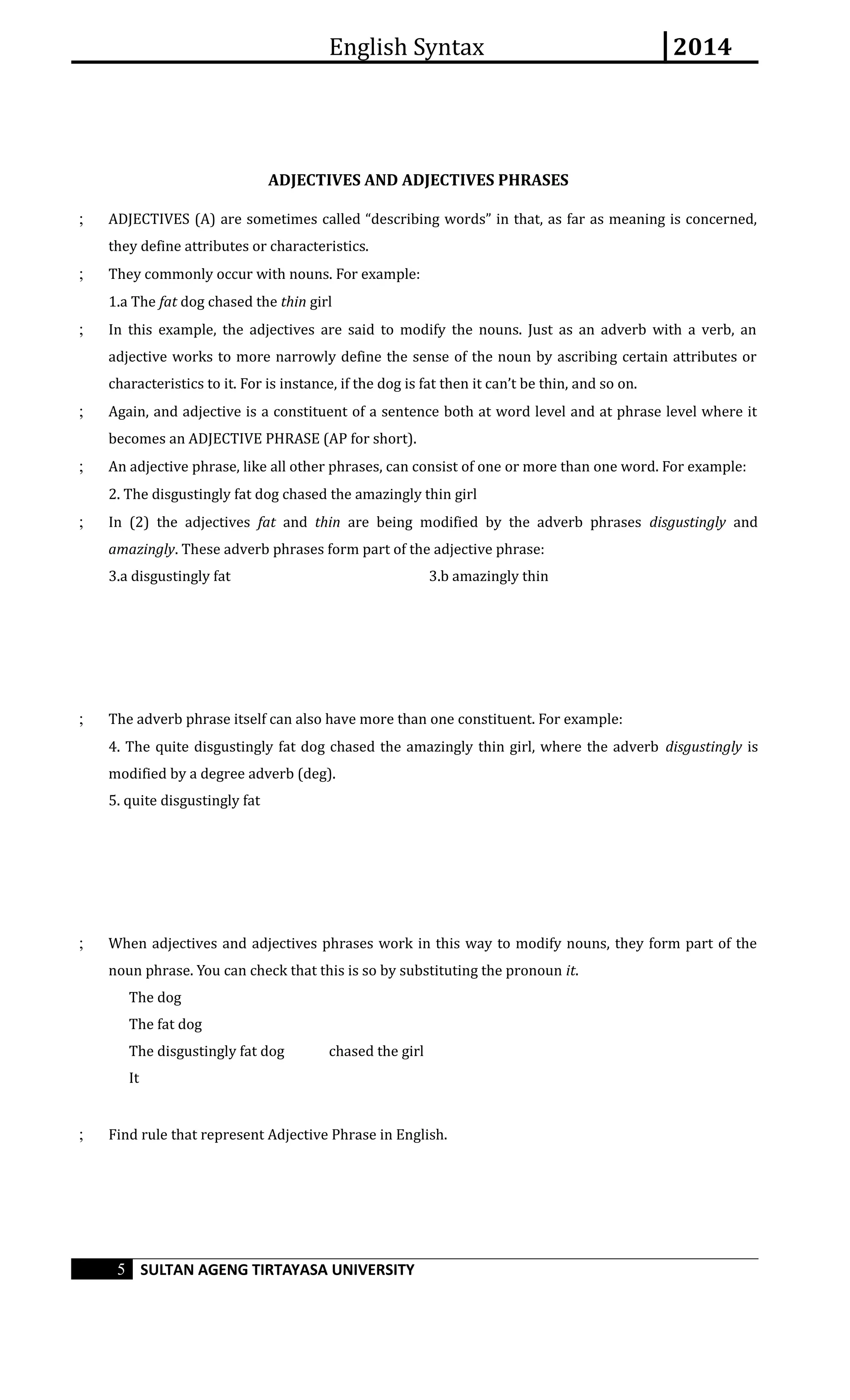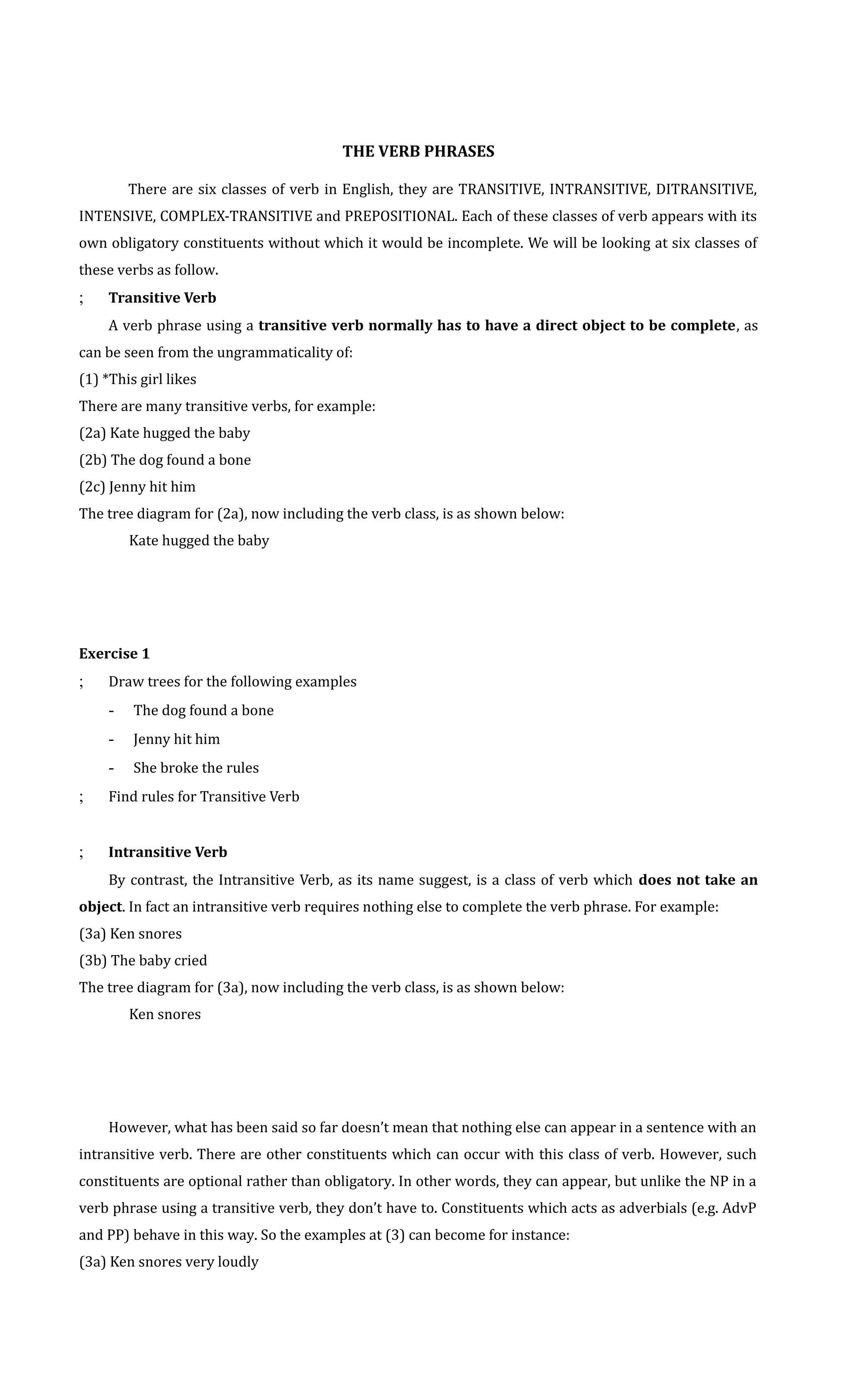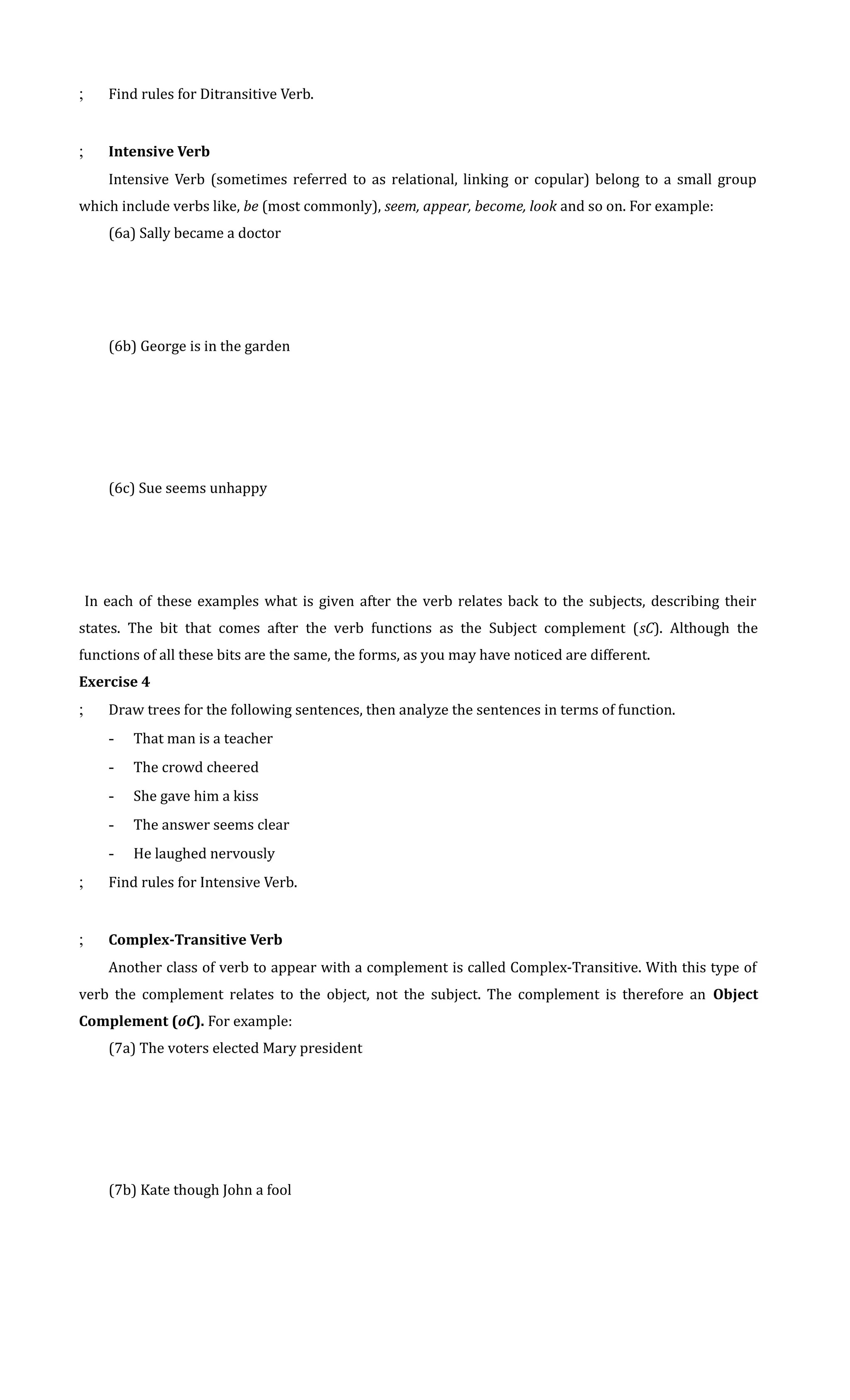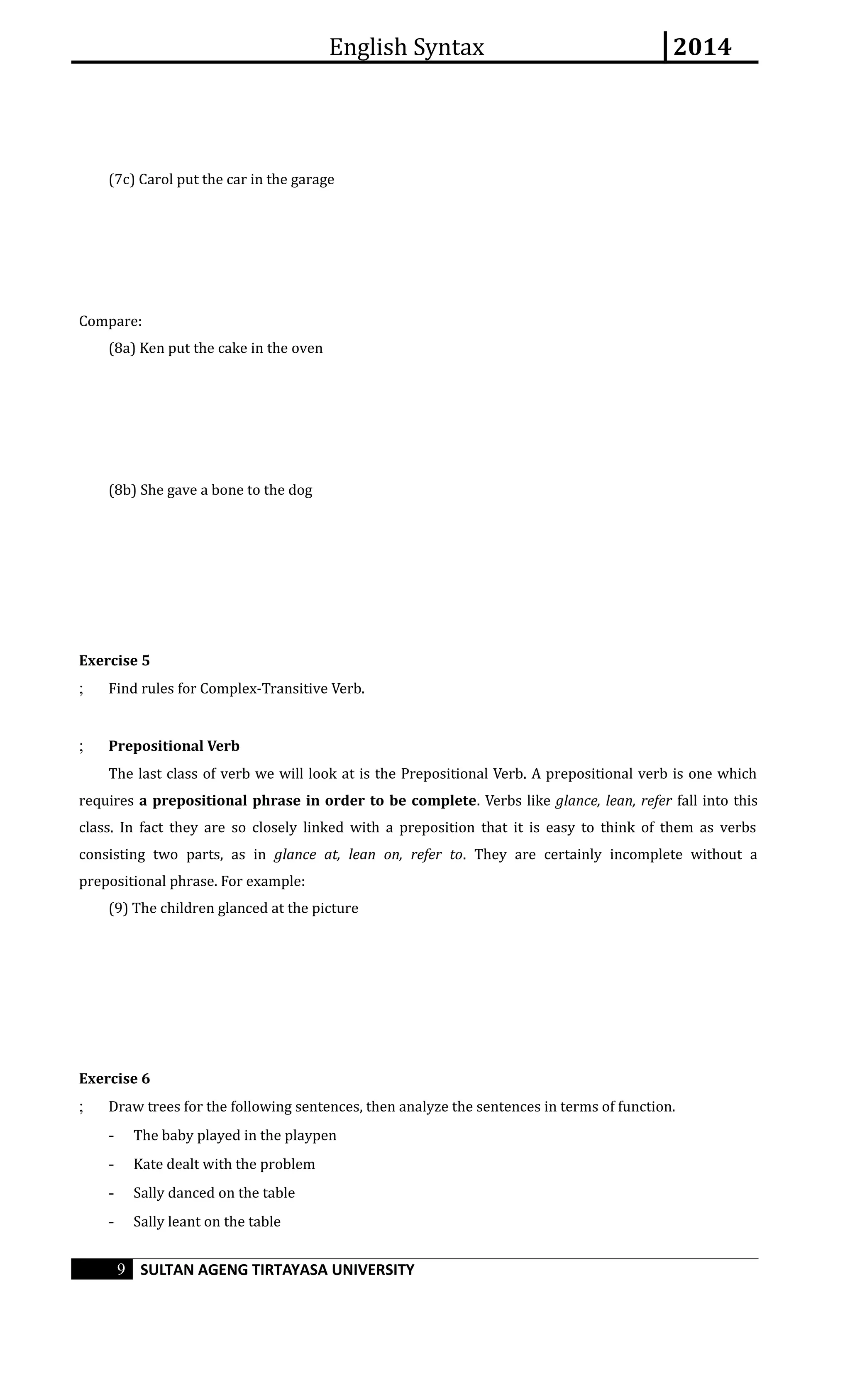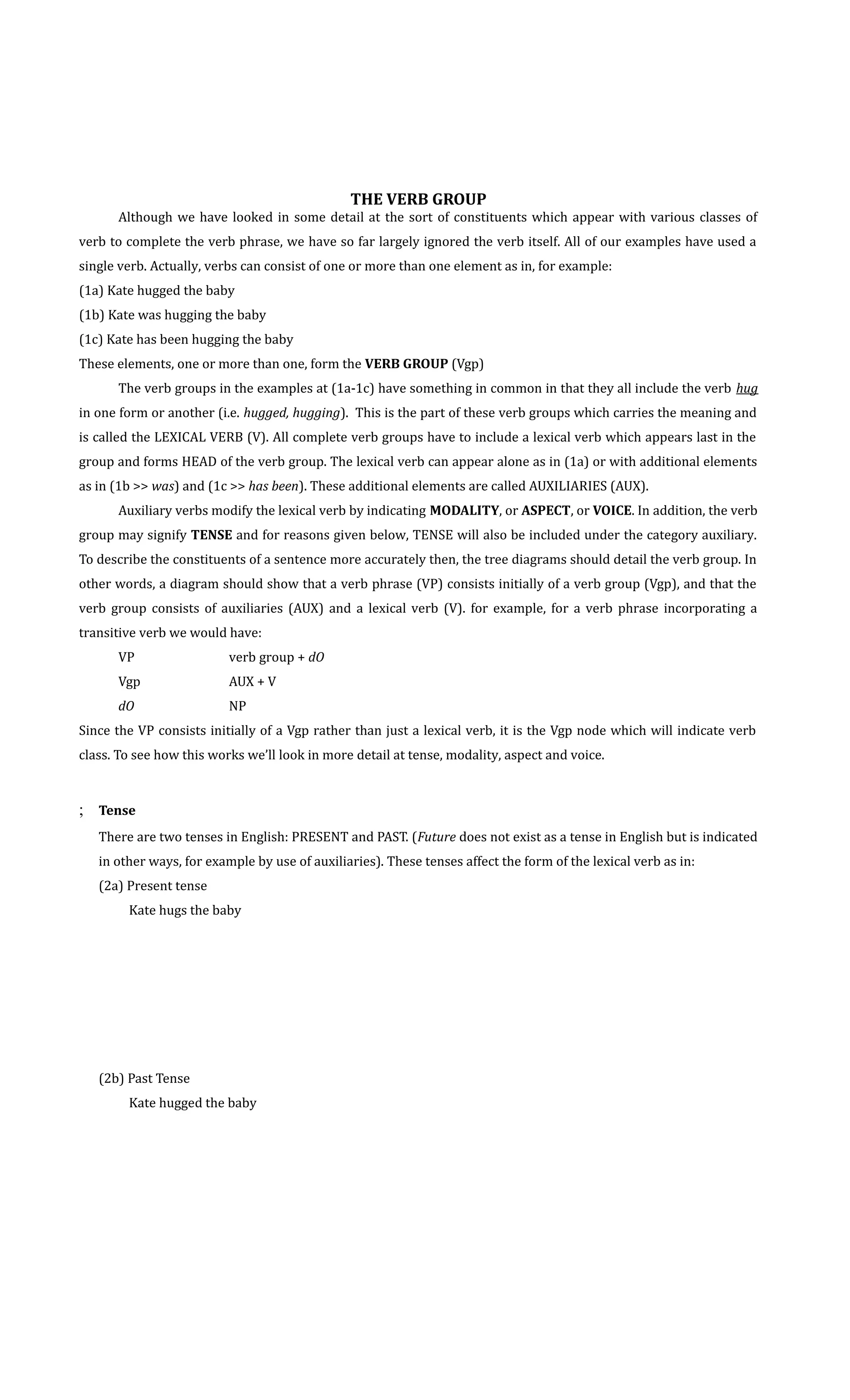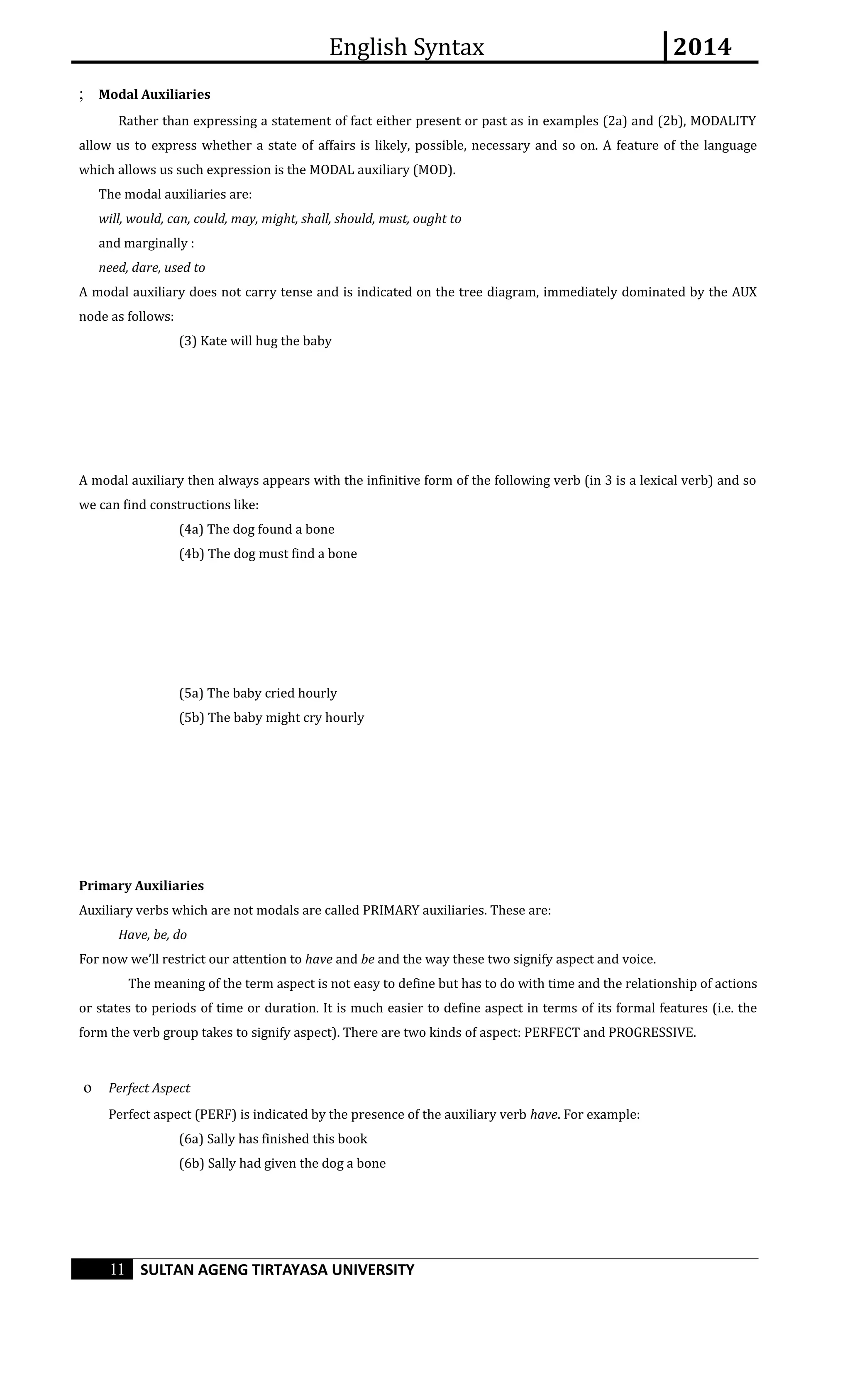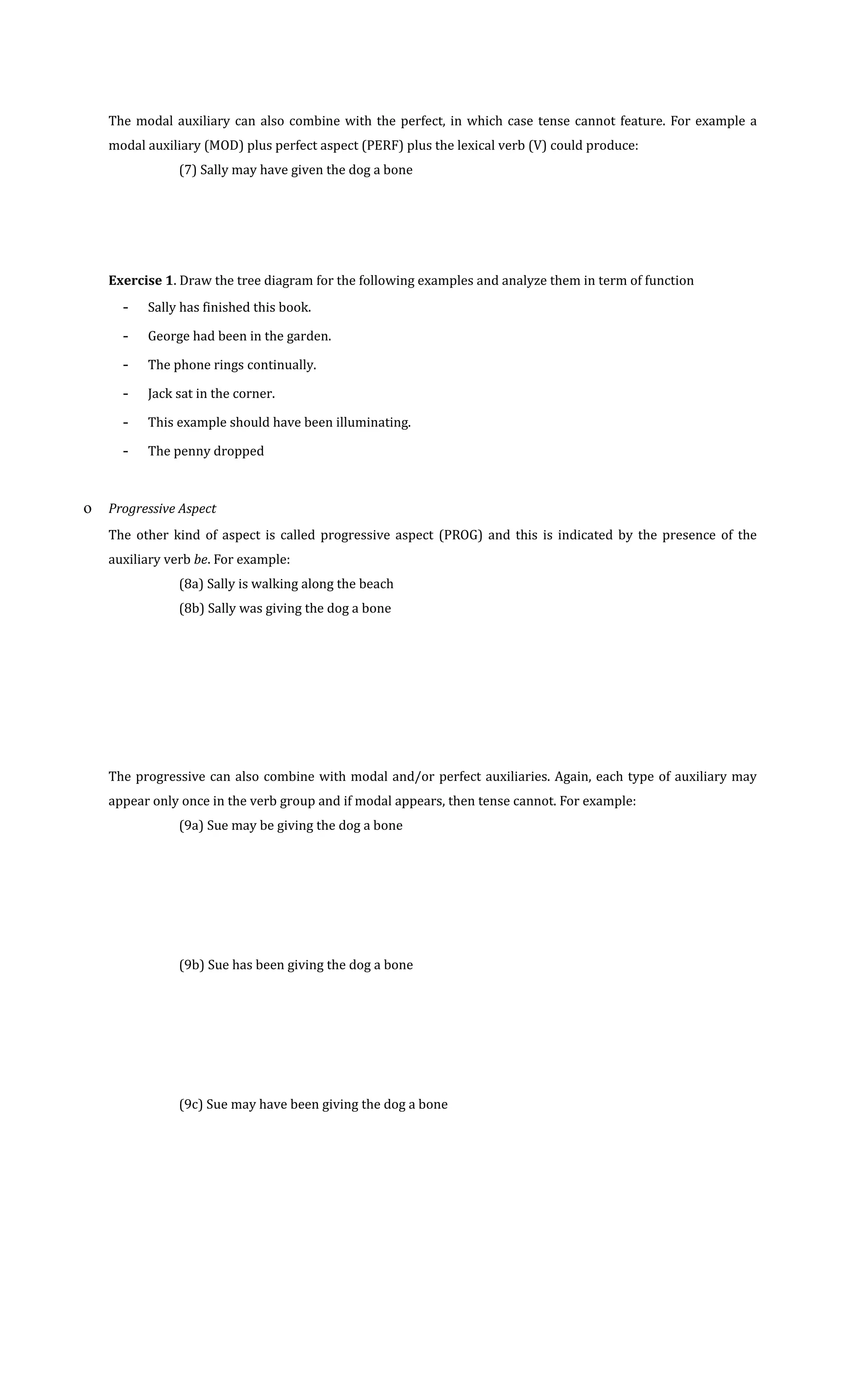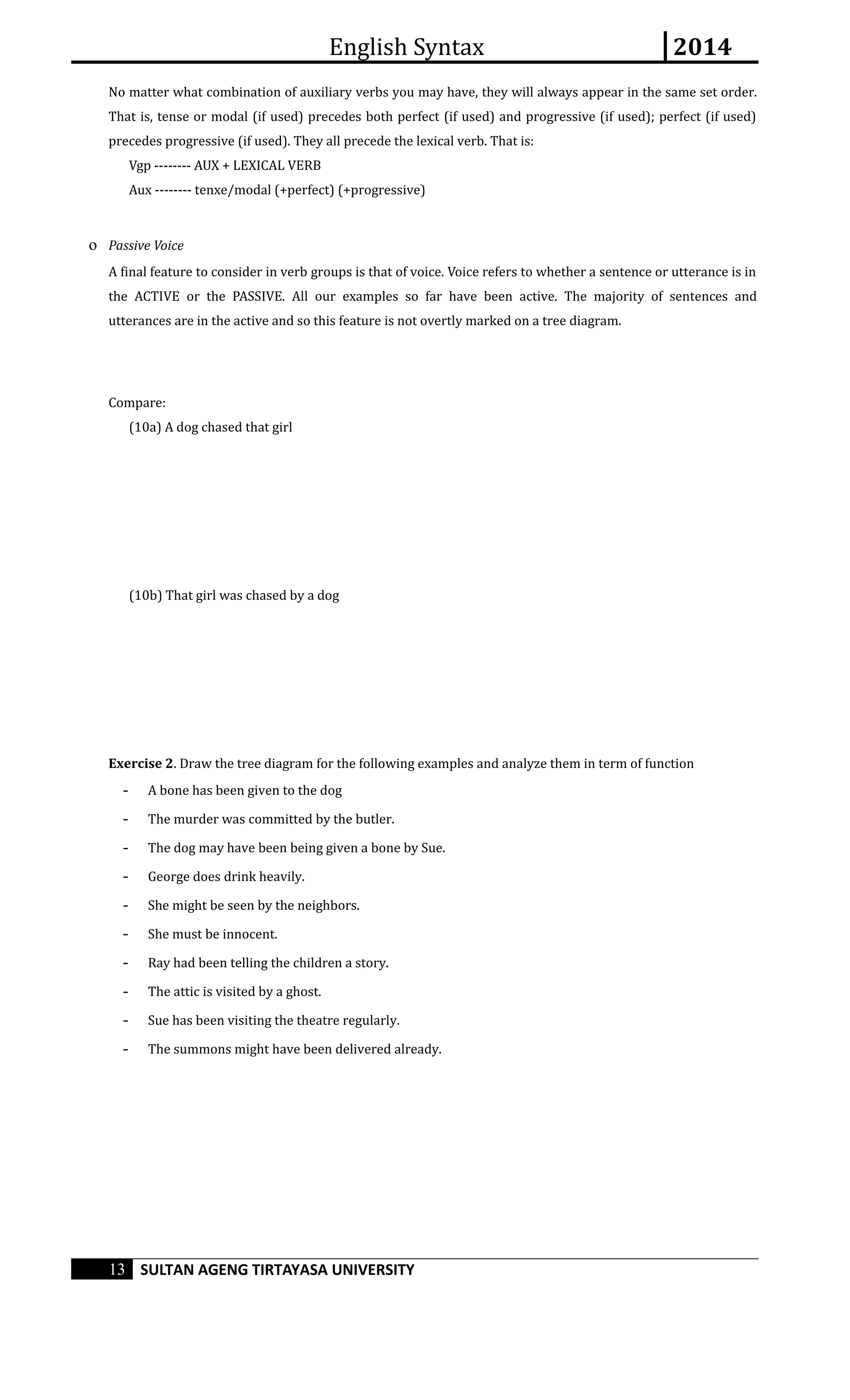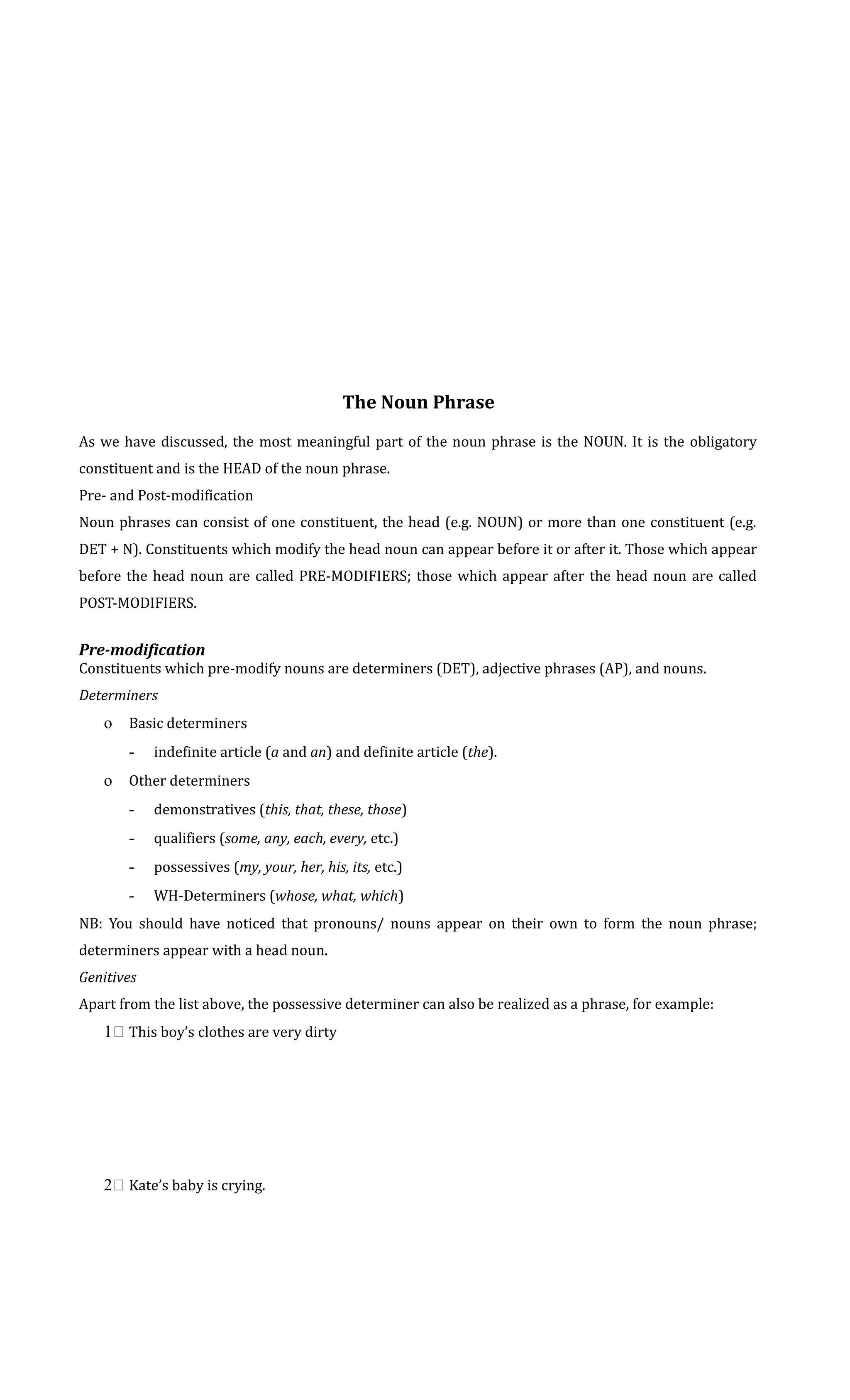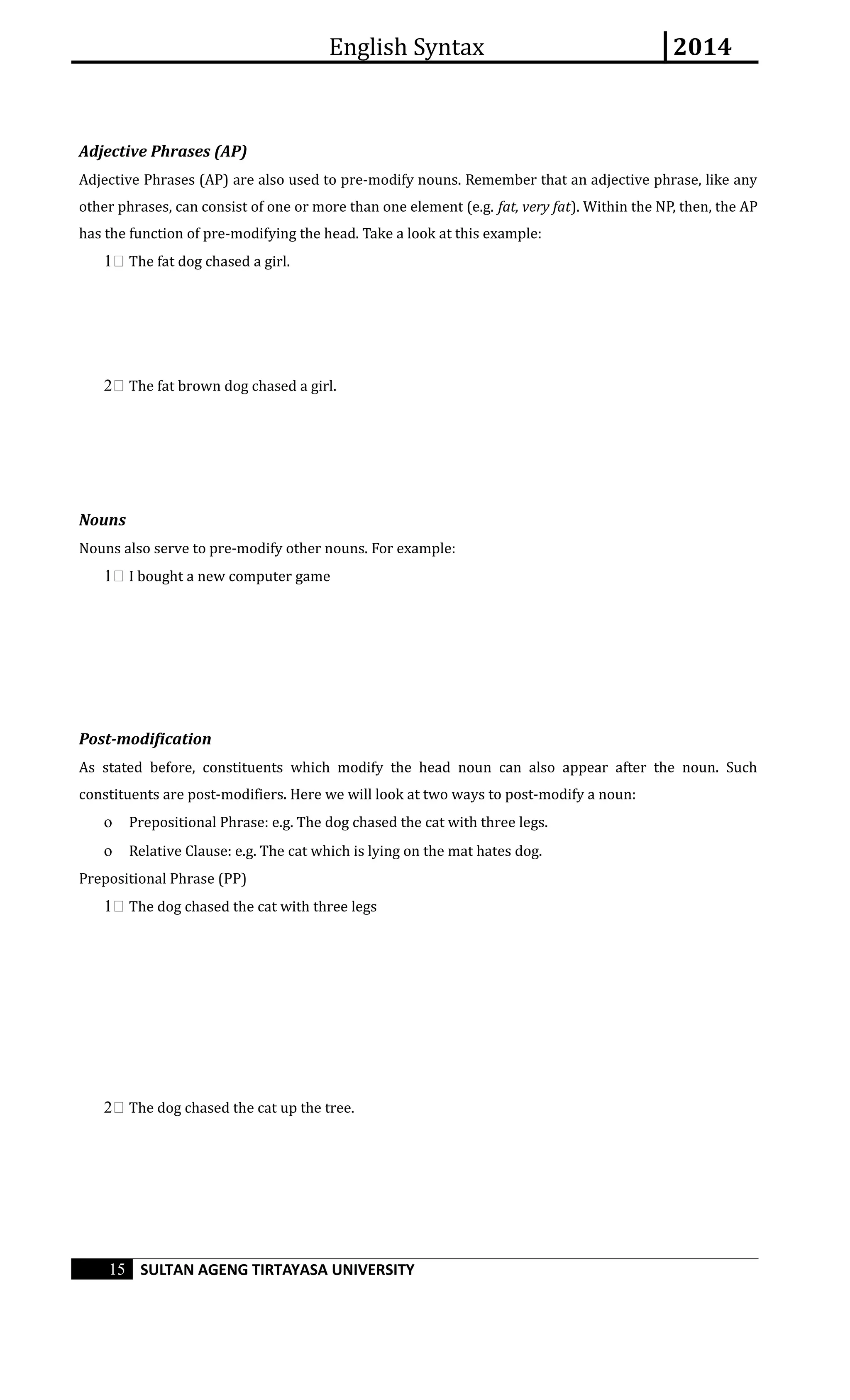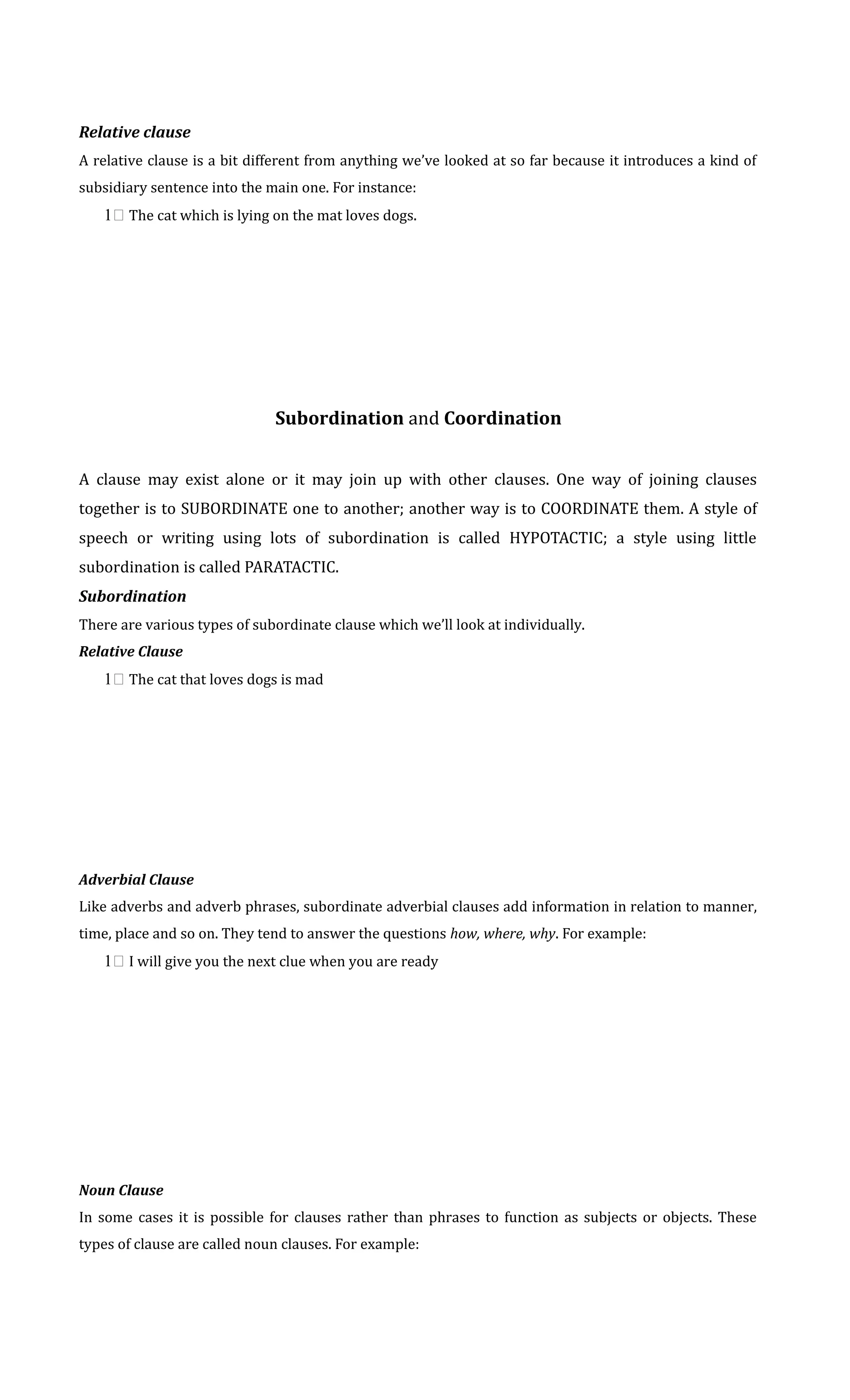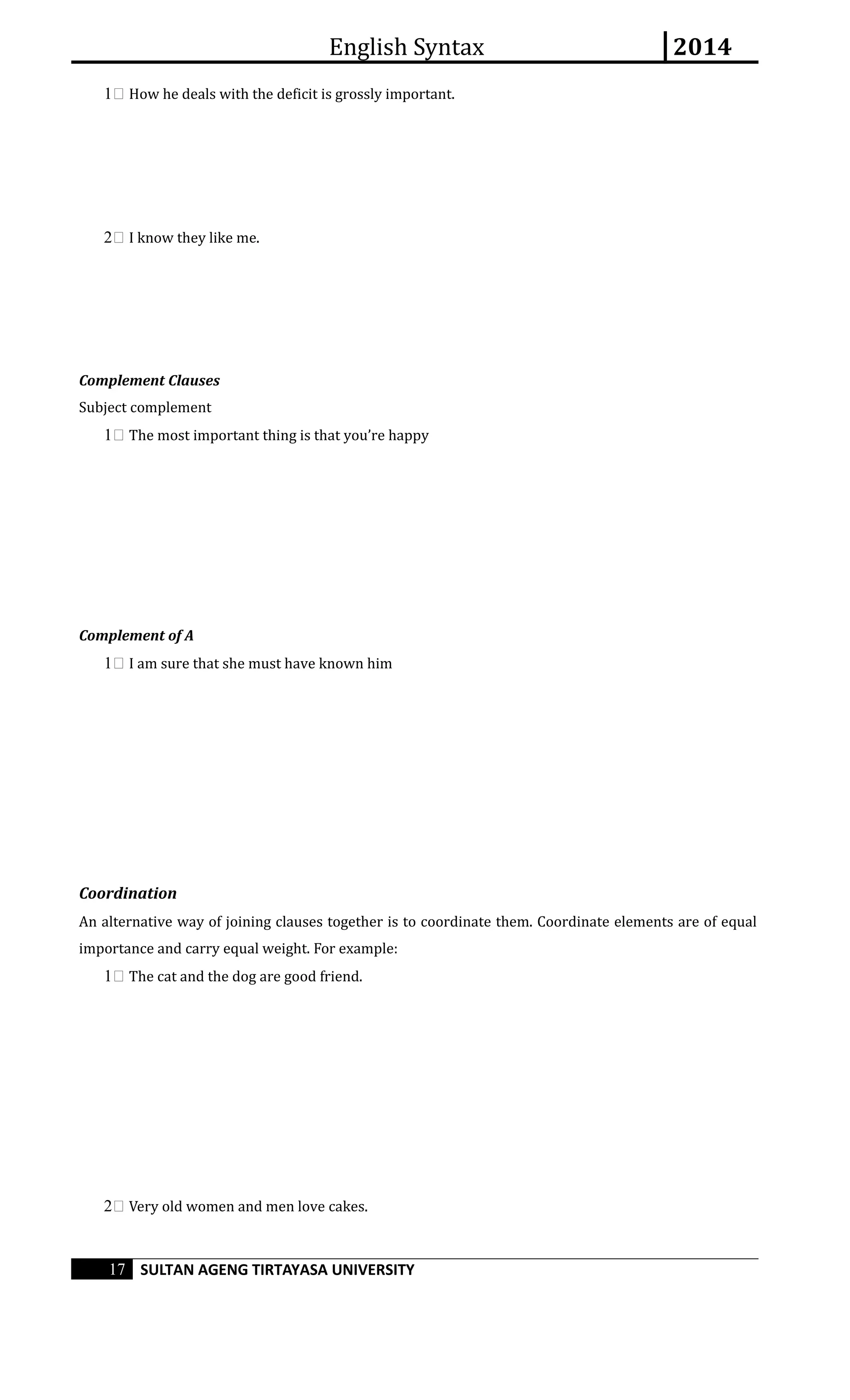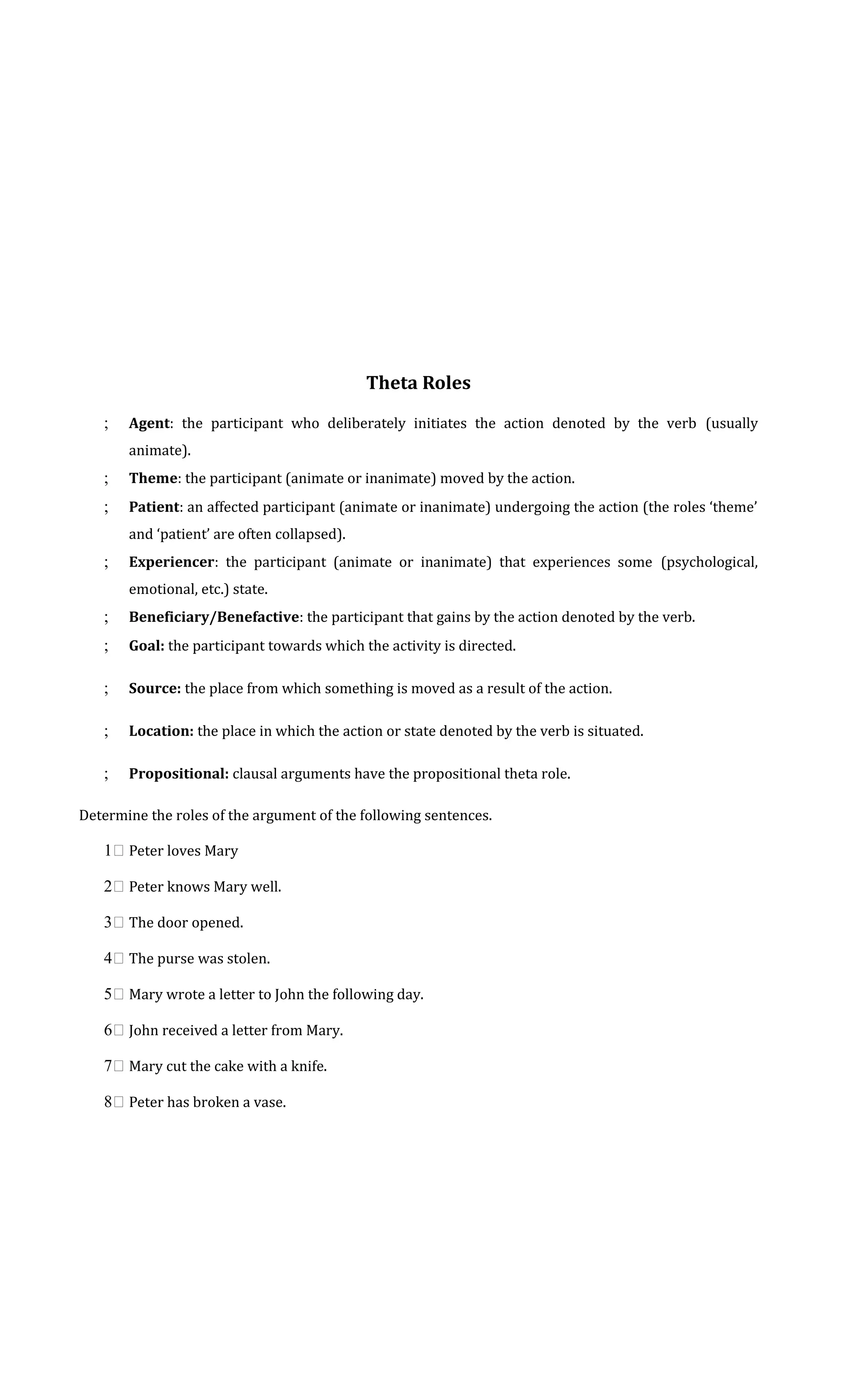This document discusses different parts of speech and phrases in English syntax, including adjectives and adjective phrases, adverbs and adverb phrases, prepositions and prepositional phrases, and verbs and verb phrases. It provides examples and rules for each type. Adjectives modify nouns, adverb phrases can modify verbs, adjectives, or whole sentences, and prepositional phrases function as part of the predicate. There are different classes of verbs including transitive, intransitive, and ditransitive verbs that take different types of objects.


